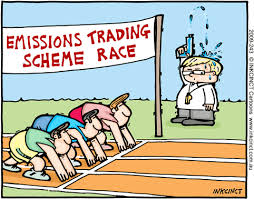California Senate President Pro Tempore Kevin de Leon added a new twist (climate change) to the increasingly popular topic of the “energy-water nexus.” Speaking at the 30th Annual Meeting and Dinner of the Southern California Water Committee, “as we live through the current severe and extreme drought, which is now approaching a 4th straight year of drought conditions, the realities of limited water supplies are hitting home.” Introducing climate change into the policy discussion, Senator de Leon will move water agencies into a new era of carbon emission control. Will participation in California’s cap-and-trade emission market become a new tool for water managers? Continue reading

